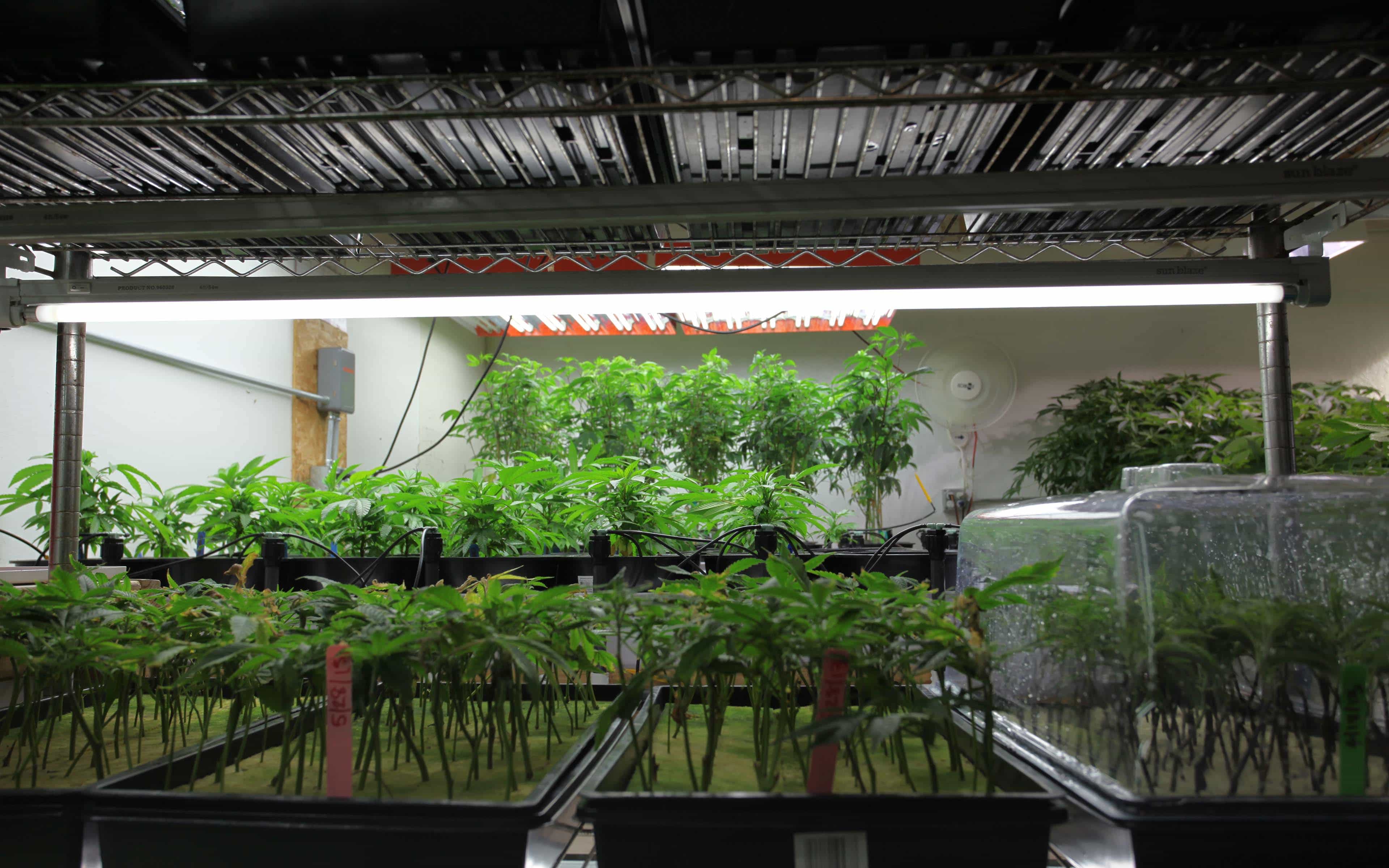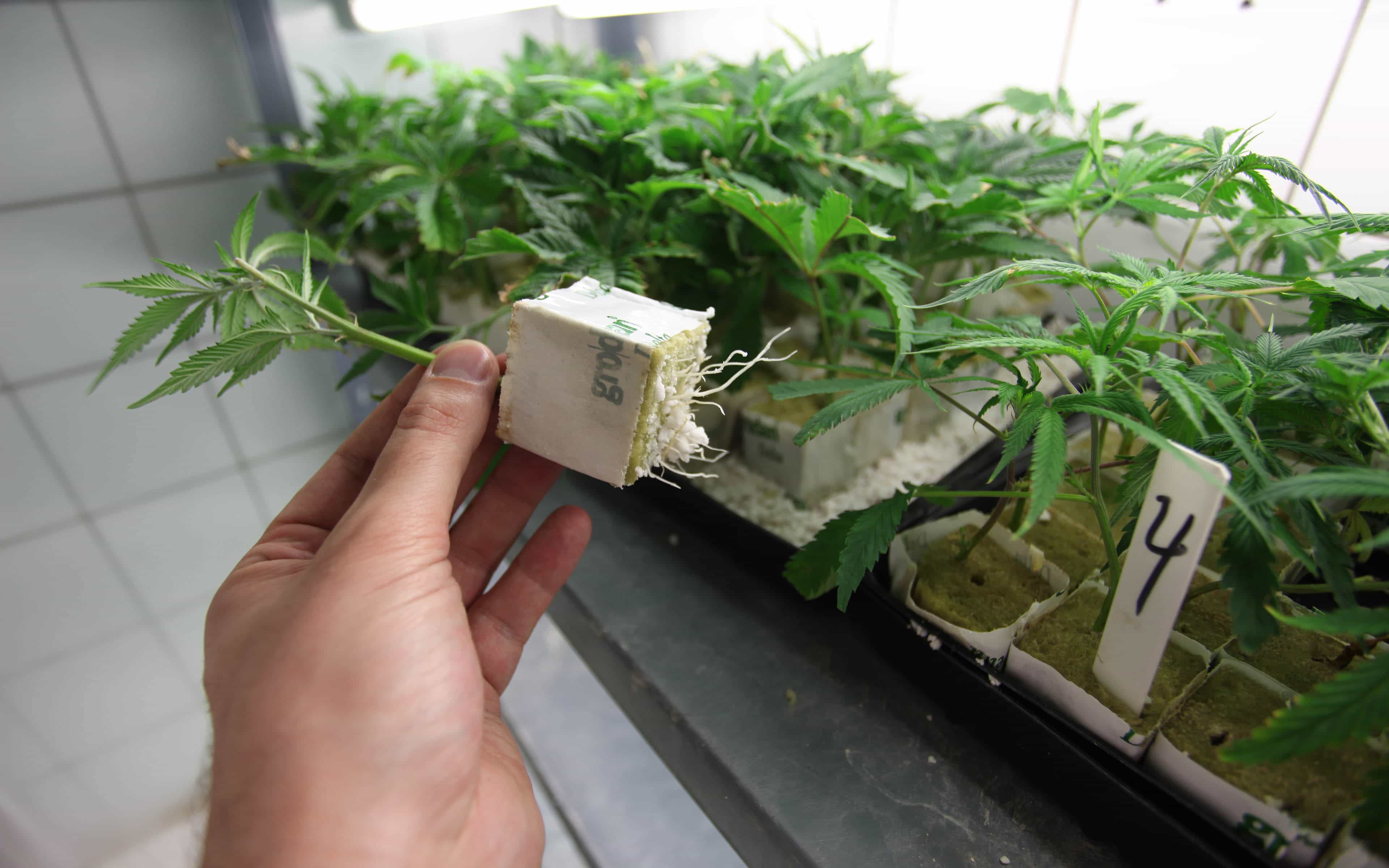Hello, sir!
Many thanks for your glorious website! I want to know if I can take a cutting off my friend’s weed plant and take it home to grow it? I have a small closet and HPS bulb to grow it under. How do I turn a cut stem into a clone plant? I hope you can help me, I love weed!
— Dex D. via the mailbag at NicosNuggets@hightimes.com
Howdy, Dex D.!
Thanks for writing in with a question, and we are very pleased to hear that you love weed! Even more pleased to hear you desire to grow your own at home. It is a noble and rewarding endeavor for sure.Taking cuttings from plants and turning them into stable and mature clones is actually a pretty easy process. The fact that you already have a space (a closet and HID lamp) to put your plants in will make the whole process that much easier for you once you have your cuttings rooted and stabilized.
Rooting Technique
To start, when you take your cuttings off the mother plant, be sure to wear rubber gloves and have you blades (razor, trimmer, etc.) sterilized in alcohol. Any bacteria near the cut stem can be a setback in the rooting process.When taking your cuts, look for younger (lighter green color), vigorous shoots, close to the main stem and just above the node (the point where a leaf or branch meets another stem or branch). The best cuttings are usually taken from the lower portions of the mother plant, as these tend to root easier than the older, more dominant top shoots.Snip only fresh, vigorous looking shoots—longer in length than you will need, so approximately 8”—making the cut with a sterile blade at a 45° angle. The diagonal angle cut helps provide more surface area at the cut point from which roots will eventually grow.Once cut, immediately place the cuttings in a sterilized cup of distilled/purified water. This will stop air from entering the stem and keep the leaves flush with moisture, preventing them from drying out. Cut all the cuttings you need at once, before moving on to the rooting process.

Using trays and humidor lids is a very effective method to ensure viable, rooted clones. (Photo by Nico Escondido)
Next, take your clone medium—either Rockwool plugs or cubes, or peat pellets—and soak them thoroughly in purified water so that they are completely saturated. Then, take each cutting, checking the angle of the cut and re-snipping if necessary to make a more angled surface area, and gently dip the cut end into a rooting gel or powder. The rooting gel or powder provides plant hormone to help induce rooting. This step is very helpful, but not totally necessary as vigorous plants such as young cannabis shoots can root easily without them as well.
Place each cutting firmly in the cube or pellet hole and gently push it down into the medium about halfway to the bottom. Make sure the first leaf set is close to the surface of the medium (about 2-3 inches), so that the clone doesn’t grow a long, stretching stem.
Clone Vegging Tips
Dex mentions his closet and an HPS (high-pressure sodium) lamp set-up in his question, however, for young clones (and seedlings alike), a high-intensity discharge (HID) lamp is not yet necessary and should be saved for when the plants are a few weeks older. Baby clones need only a broad-spectrum light, heavier in the blue wavelengths, which is why many growers use fluorescent bulbs in their nurseries. These bulbs are relatively inexpensive, easy to hang and don’t draw much electricity.
Placing the clones in a tray with a humidor cover is the best way to get them rooting. Placing a heat source, like a heat mat (around 80°F) under the tray will also help to greatly increase the rate of root growth. Keep the tray and humidor constantly moist and humid, but be very careful not to allow any standing water in the bottom of the tray. This will be too much water and will drown any new roots that begin to sprout.

Roots should appear within 7-10 days and then can be transplanted into containers. (Photo by Nico Escondido)
While optimal temperatures for rooting clones is 80°F, there is always debate about how much light rooting clones and seedling—and even vegetating plants—should receive.
Studies have shown that 24-hours of light per day is actually not the best practice for young plants—especially those trying to root. Many growers forget that roots like to grow at night (dark cycle) and they breath in oxygen while the rest of the plant breaths in CO2. In truth, at 80°F, somewhere between 16-18 hours of light in a 24-hour period is optimal for quicker and longer root development. During the 6-8 hours of “down time” (darkness) the leaves and stems transfer energy down to the root zone for storage and growth.
Lastly, it is important to note that no nutrients should be used during the rooting phase, which typically lasts between seven and 10 days. Not only will nitrogen work against certain plant hormones at this age, but salts contained in nutrients can slow moisture uptake for the young plant.
Thanks for reading everyone and remember: Grow… And help the world grow, too!
Follow Nico on Social Media: @Nico_Escondido (Twitter) & @Nico_High_Times (Instagram)
Got questions? Email ‘em over to Nico at NicosNuggets@hightimes.com and be sure to put “Nico’s Nuggets” in the subject line! (Tip: Before sending a question, try the new Search feature on the HIGH TIMES website. Simply click the “magnifier” icon at the top right and type “Nico + your subject topic” to see if your question has already been answered!)
Don’t miss the previous Nico’s Nuggets: Grow Some Weed This Summer!




0 DL LiNKS:
Post a Comment
Add yours...